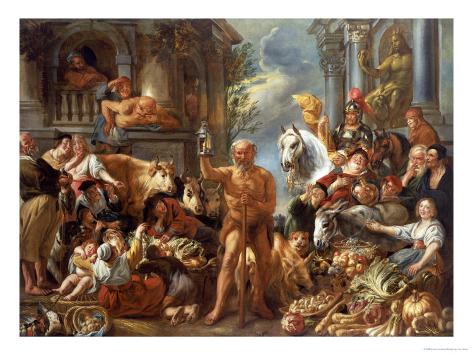
Describing one such occasion, Diogenes Laertius wrote, “when a youngster broke up his tub, they gave the boy a flogging and presented Diogenes with another” ( Lives of Eminent Philosophers, 6.2.43). Yet, thanks to Diogenes’ fans and admirers, the public was said to have made sure that Diogenes was given a new tub or barrel whenever the current one broke.
#Diogenes art portable#
Diogenes’s portable tub home, or barrel (as it is more popularly represented) may have needed to be replaced from time to time. And in summer he used to roll in it over hot sand, while in winter he used to embrace statues covered with snow, using every means of inuring himself to hardship” ( Lives of Eminent Philosophers, 6.2.22-23). And then he would say, pointing to the portico of Zeus and the Hall of Processions, that the Athenians had provided him with places to live in… he took for his abode the tub in the Metroön, as he himself explains in his letters. 3rd century), a biographer of philosophers, who wrote, “he used any place for any purpose, for breakfasting, sleeping, or conversing.

This characteristic was summarized by Diogenes Laertius (c. He was a minimalist and not picky at all about where he lived and what he ate or drank. Nevertheless, he seemed to have more fans than foes.Īnother interesting aspect of Diogenes’ character-which the painting highlights-was the philosopher’s adherence to an ascetic lifestyle. He gained a reputation for being brilliant and witty, but his pranks also often annoyed his targets and their friends.

There, Diogenes made a name for himself by undermining and critiquing (or, you could say, belittling) the theories of other philosophers, and doing so with a great deal of showmanship. Originally born in the Greek-colonized city of Sinope on the Black Sea coast of Anatolia, he eventually moved to the ancient Greek intellectual hub of Athens.

This painting, by an unknown 17th-century artist, depicts a unique and peculiar philosopher from the 5th century BCE who was called Diogenes the Cynic.


 0 kommentar(er)
0 kommentar(er)
